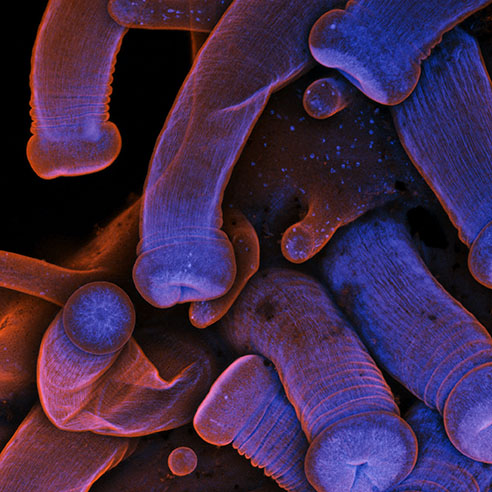Ethan Whitecotton, NCLC’s summer photo archive intern, is spending most of his time with us at the computer, cleaning up and adding to our extensive photo archive (read more about him and our other summer interns here). He is also an accomplished photographer. He is a student of biomedical photographic communications at Rochester Institute of Technology, where he is becoming expert at photomicrography. But he also has a keen interest in conservation photography. (That’s Ethan in the photo, getting a shot of a Chambers paintbrush, high in the proposed Rainforest Reserve.)
Here Ethan shares a few of his images with an ocean theme. You can see more of his work at ethanwhitecotton.com.

A turtle glides past us in a Caribbean reef off the coast of Bonaire.


A Caribbean spiny lobster that rests among the coral 70 feet below the surface. I was on a night dive and my flash didn’t work, so all of the light in this image is from flashlights.


A light microscope image of a starfish. Starfish are echinoderms that can hold many ecological roles in ecosystems. Some starfish are even keystone species that have more value to the health of the ecosystem than is immediately apparent. Starfish are currently facing several risks including a wasting disease, high water temperatures, and marine pollution. Their high sensitivity to pollutions makes starfish a good indicator species.


These are the tube feet of a starfish. Tube feet of starfish allow the animal to move, cling to surfaces, and capture food.




Barnacles are sessile arthropods that attach to surfaces in their adult forms. The earlier stages of the life cycle include the nauplius and pelagic cyprid. During these life stages, the barnacle is mobile through the use of thoracopods for swimming and antennules for walking.
Comments